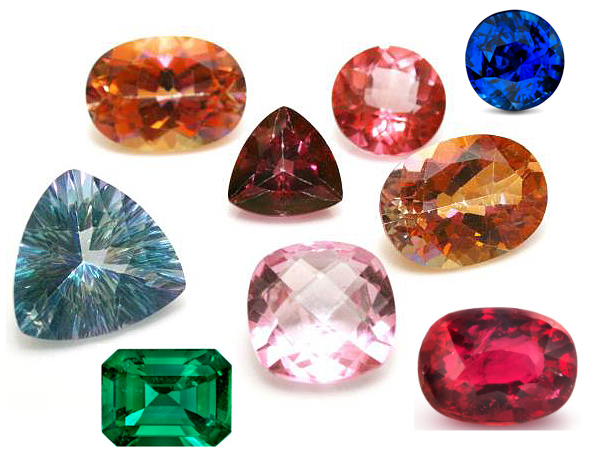The value of a diamond is determined by its cut, color, clarity, and carat weight. While these factors are certainly taken into consideration when determining the quality of a colored gemstone, there is no officially accepted grading system for colored gems. So how can you be sure that the gemstone you’re considering to purchase is worth its price tag? Here are some factors you should consider when looking to purchase a ruby, sapphire, and emerald.
How intense is the color? The most important quality factor of a precious gemstone is its color, with the most valuable gemstones featuring a deep, intense color. A gemstone’s color can be intensified (or diminished) depending on how it’s cut. Here’s how to know if you’re looking at a high quality ruby, sapphire, or emerald.
- The highest quality rubies feature a color that is not too dark nor too light. The most valuable ruby color is referred to as pigeon’s blood, which features a deep red color.
- While sapphires can be found in a variety of different colors, the most sought after ones are blue. The most highly valued blue sapphires are Kashmir blue sapphires and feature an intense blue color. The most valuable blue sapphires have a medium to dark tone.
- The most valuable emerald color is a saturated green, with a medium to slightly dark tone.
Are inclusions visibly present? Rubies, emeralds, and sapphires are all expected to have at least some inclusions (emeralds more so than the other two). Those that don’t have any inclusions are extremely rare to find and thus more valuable. If the inclusion is found in a location that affects the gemstone’s color, brilliance, or transparency, it can greatly diminish the overall value of the gem.
How clear is the gemstone? The more transparent the precious gemstone is, the more valuable it will be. After all, who wants to look at a cloudy sapphire, ruby, or emerald?
How large is the gemstone? Everything else equal, the larger the gemstone, the more valuable it is. Fine quality rubies weighing over one carat are very rare and thus more valuable. A fine quality 5 carat blue sapphire can sell for approximately five times more per carat than a 1 carat sapphire of similar quality. .02 -.5 carat emeralds tend to be set as accent stones in jewelry while a 1-5 carat emerald is a popular size for a featured stone in a necklace or ring.
Does it come with a grade? As mentioned above, there is no universally accepted grading system for colored gemstones. However, it’s common for jewelers to grade their sapphires, rubies, and emeralds as AAA, AA, or A. A natural AAA quality gemstone is included in the top 10% of gems available. They have an intense color and may be slightly included. AA quality gems are in the top 20-30% and feature a nice, deep color and are moderately to slightly included. Natural A quality gemstones are in the top 50-75% of natural gems available in the fine jewelry market. These gemstones tend to have a darker color, look opaque, and are sometimes heavily included.
If you’re still not sure if the gemstone that you’re considering to purchase is a high quality gem, make sure to consult with a reputable jeweler that will assist you in selecting the highest quality gemstone within your budget.


